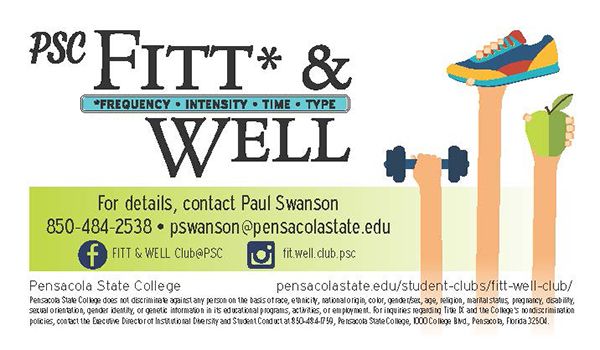
Club Goals:
To educate, promote and engage PSC students in health and wellness activities focused around the eight basic dimensions of wellness.
FITT&WELL CLUB MEETINGS:
FITT&WELL Club meetings will be held on most Tuesdays at 2:00 p.m. and will generally be held in the Student Center building 5 on the main Pensacola State College Campus. (See club flyer schedule). As we are an activity based club developed to help students, faculty and staff, get moving, and improve their overall health and wellness, we have designed our regular scheduled meetings around different fitness based activities. Each week the club meeting will feature a different activity that will give the attendees an opportunity to experience and learn the proper and safe techniques of a new physical exercise. We want these meeting exercise sessions to be fun and educational while providing a positive social group environment that is challenging, while also being comfortable and adaptable for beginners as well as more experienced exercisers. This is an opportunity for students and faculty to try a different activity they have heard about or always wanted to experience. Hopefully, attendees will find one or more of the exercise activities enjoyable and will explore opportunities continue those skills at facilities within the community or at home. Once each term we will do a basic health screening as our scheduled activity. This will give attendees a chance to get some free personal baseline health information including: accurate height and weight, BMI, % of Body Fat, Blood Pressure and Flexibility readings, along with some general health information and recommendations.
WHO IS ELIGIBLE TO PARTICIPATE OR JOIN?
Any currently registered full or part-time PSC student is eligible to join the PSC FITT&WELL Club. Faculty and staff members are welcome to attend any of the weekly event/meetings or scheduled club service activities, however, they cannot become official student club members. Attendance at meetings is not mandatory, however we hope members will attend as many events and club sponsored service activities as possible.

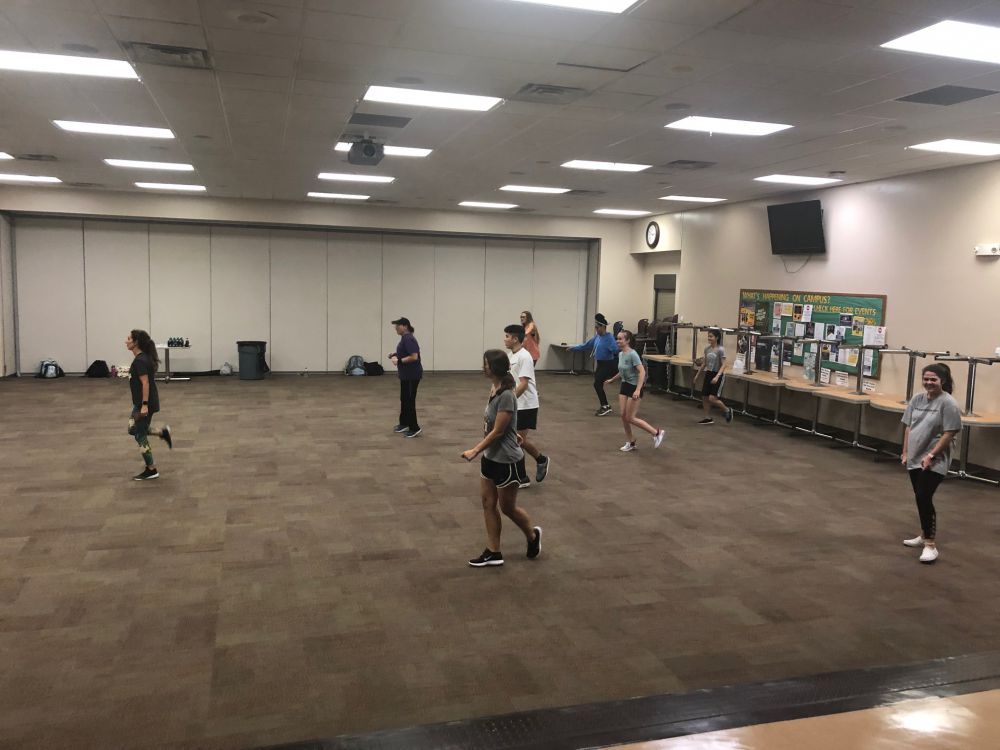
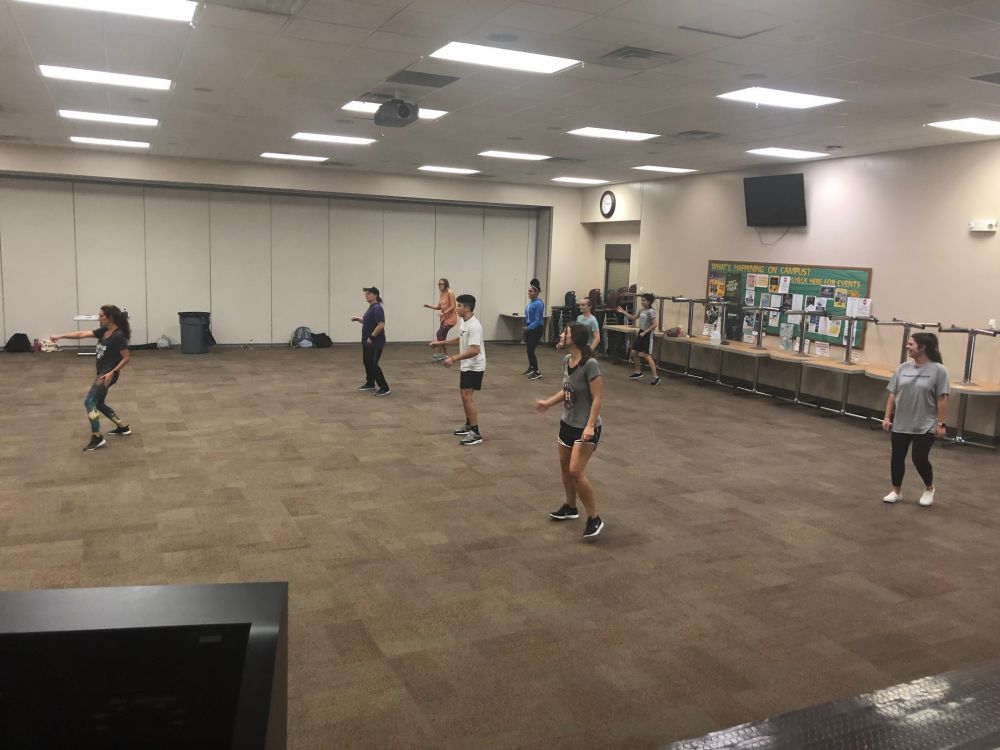
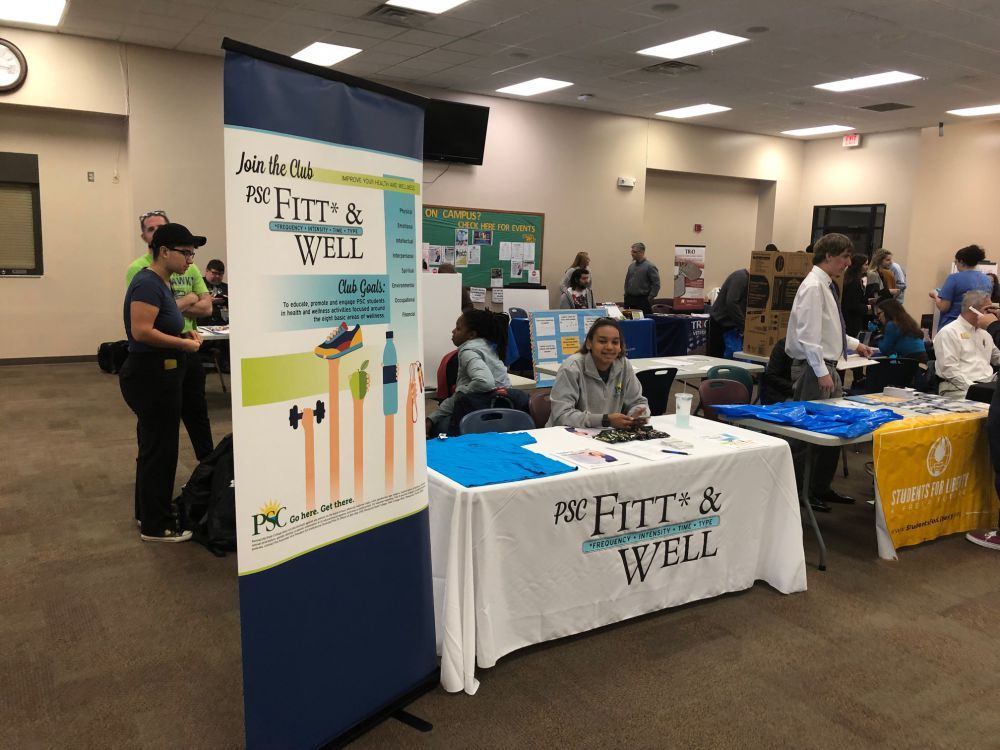
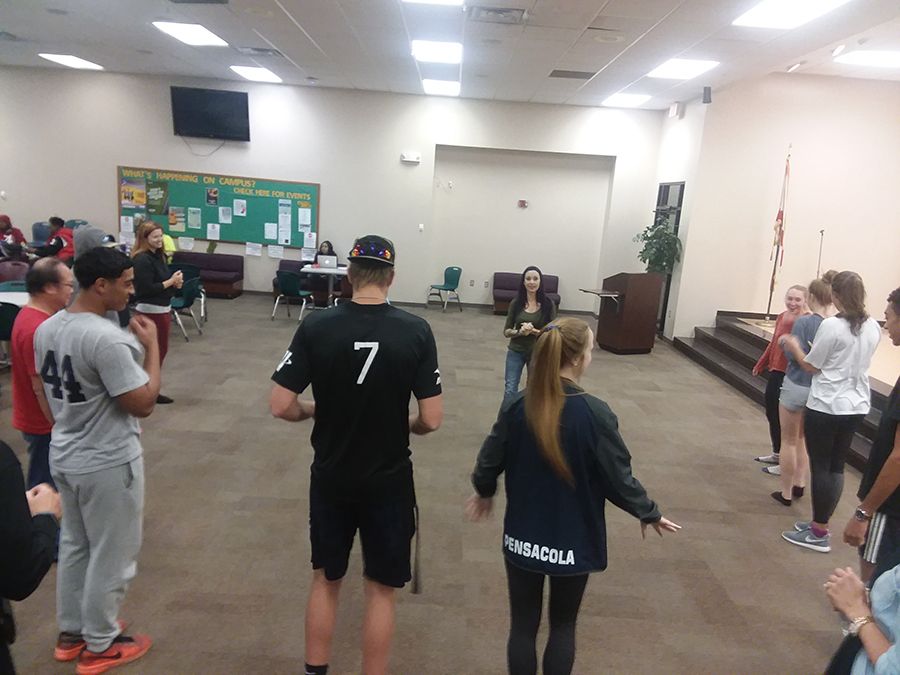
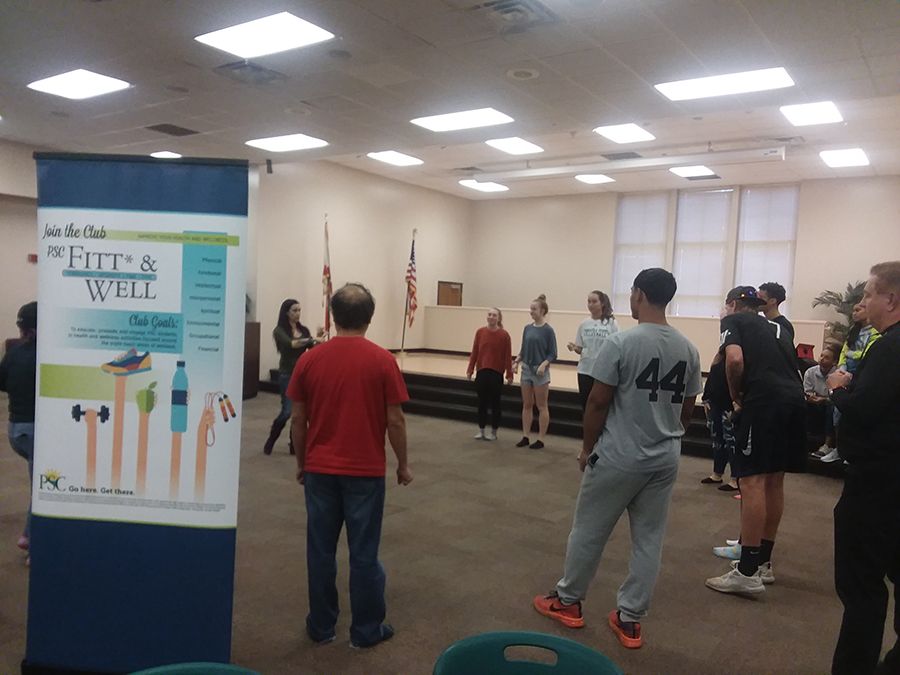
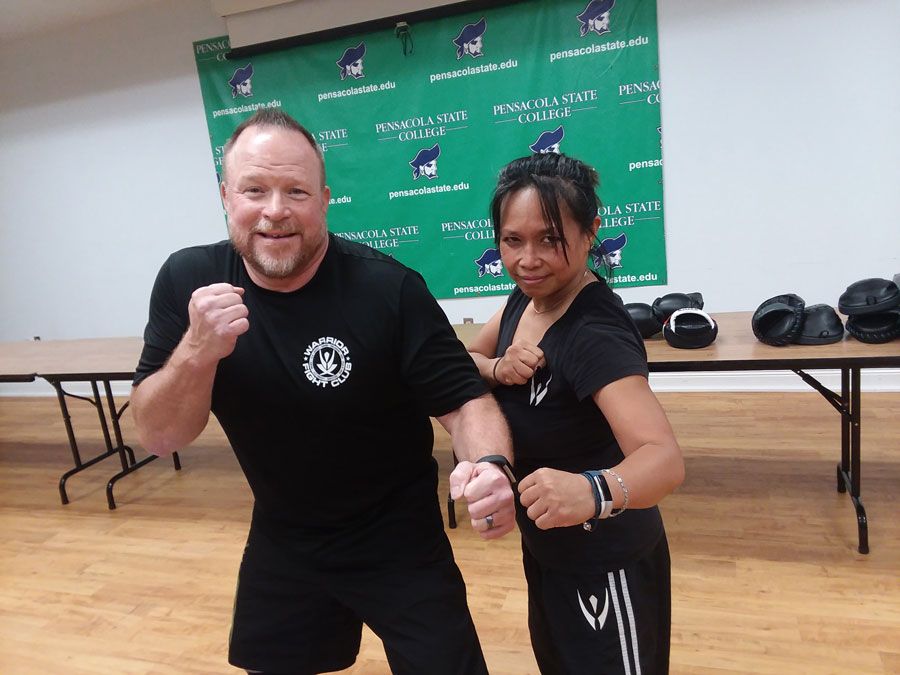
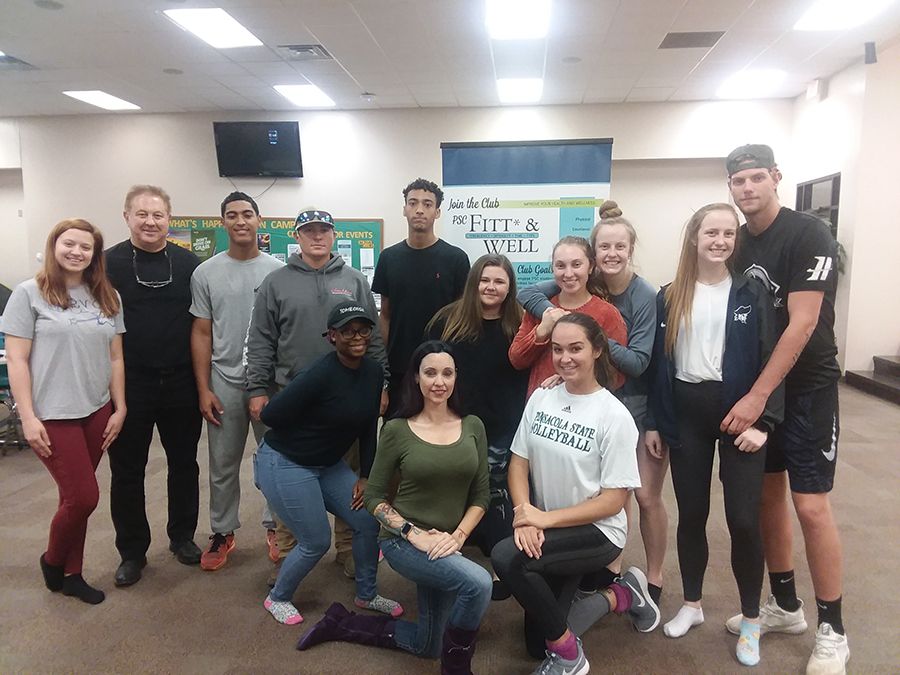

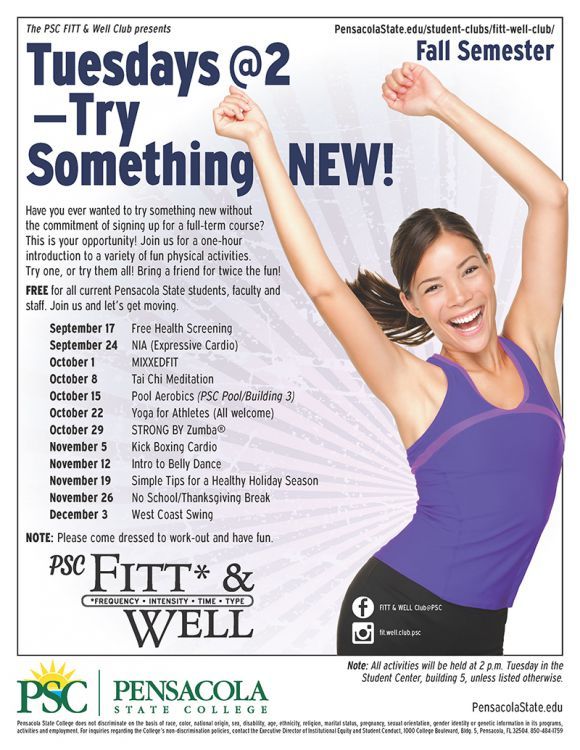
Campus: PNS,
Phone: 850-484-2538
Email: pswanson@pensacolastate.edu
Meeting Schedule: Tuesdays at 2:00 PM
Meeting Location: Building 5 Student Center
Club Advisor: Paul Swanson
PENSACOLA STATE COLLEGE FITT&WELL CLUB WEBSITE DISCLAIMER:
This website is designed to provide the PSC student body, faculty and staff with a collection of publicly available health and fitness information that presents a wide range of current topics relating to the eight dimensions of wellness. The mental and physical health, fitness and nutritional information provided on this website is designed for educational purposes only. The material contained in this website is not intended to recommend the self-management of health problems or wellness, nor is it intended to endorse or recommend any particular type of medical treatment. You should not rely on this information as a substitute for, nor does it replace, professional medical advice, diagnosis, or treatment. Should any reader have any health care related questions, promptly call or consult your physician or healthcare provider. You should always consult your physician or other health care professional before starting this or any other fitness program to determine if it is right for you. The use of any information provided on this site is solely at your own risk.
NOTE: You should not use any information contained in this website to initiate use of dietary supplements, vitamins, herbal and nutritional products or homeopathic medicine, and other described products prior to consulting first with a physician or healthcare provider. Only a physician or registered dietician are allowed to design specific dietary or nutritional plans for any individual.
Emergency Contacts
text “GULF” to 741-741
National Sexual Assault Hotline
1-800-656-HOPE (1-800-656-4673)
24 hour CHAT:http://online.rainn.org
National Suicide Prevention Lifeline
1-800-273-TALK (1-800-273-8255)
CHAT: National Suicide Prevention Lifeline
National Abusive Relationships Helpline
1-866-331-9474
24-hour chat online:www.loveisrespect.org
TEXT: LOVEIS to 22522
Treatment Referral Hotline (Substance Abuse)
1-800-662-HELP (1-800-662-4357)
Behavioral Treatment Services Locator:
https://findtreatment.samhsa.gov
The Trevor Lifeline (Suicide Prevention for LGBTQ Youth)
866-4-U-TREVOR (1-866-488-7386)
TEXT: Trevor to 202-304-1200, Fridays from 3 pm – 7 pm
CHAT: http://www.thetrevorproject.org/pages/get-help-now#tc
7 days/week 2 pm – 8 pm
Veterans’ Suicide Prevention Lifeline
1-800-273-TALK (1-800-273-8255), press 1
TEXT: send message to 838255
24 hour CHAT:www.veteranscrisisline.net
FITT&WELL CLUB EVENTS FOR FALL 2019 (2020-1)
- Club Rush/Preview Tuesday August 27th 11:30 a.m. Location- PNS Gazebo
- Club Rush/Preview Wednesday, August 28th 11:30 a.m. Location- PNS Gazebo
- PSC Day of Service Friday, October 11th 9:00 a.m. Bay Bluffs Park
- Breast Cancer Walk Saturday, October 26th 8:00 a.m. Downtown Pensacola
- Great American Smoke Out Thursday, November 21st 10:00 a.m. Pensacola Main Campus
FITT & WELL CLUB SEVICE ACTIVITIES LIST 2019-1 & 2019-2
- Participated Breast Cancer Awareness Walk (Fall 2019-1)
- Hosted a Stress Less Week – Walk the Track (Fall 2019-1)
- Suicide Awareness Pensacola Beach Walk (Fall 2019-1)
- Participated in “Day of Caring” support for Ronald McDonald House (Fall 2019-1)
- Sponsored a Safety Month Self Defense Activity – Krav Maga (Spring 2019-2
- Co-sponsored the “Body Awareness” seminar with Active Minds (Spring 2019-2)
- Did health screenings at the Pirate Fest activities (Spring 2019-2)
- Supporting the PSC Financial Literacy Committee’s “Cooking on a Dime”. (Spring 2019-2)
- Hosting a Stress Less Week –“ West Coast Swing” activity (Spring 2019-2)
Activities Schedule
[instagram-feed accesstoken=”9218514078.M2E4MWE5Zg==.NjAzNmI0MmQzMjVh.NGFiMWFhYTZjNTQxYzJkYzIzNTg=”]
Book of the Month:
Make Your Bed: Little Things That Can Change Your Life…And Maybe the World
If you want to change the world, start off by making your bed.
On May 17, 2014, Admiral William H. McRaven addressed the graduating class of the University of Texas at Austin on their Commencement day. Taking inspiration from the university’s slogan, “What starts here changes the world,” he shared the ten principles he learned during Navy Seal training that helped him overcome challenges not only in his training and long Naval career, but also throughout his life; and he explained how anyone can use these basic lessons to change themselves-and the world-for the better.
Admiral McRaven’s original speech went viral with over 10 million views. Building on the core tenets laid out in his speech, McRaven now recounts tales from his own life and from those of people he encountered during his military service who dealt with hardship and made tough decisions with determination, compassion, honor, and courage. Told with great humility and optimism, this timeless book provides simple wisdom, practical advice, and words of encouragement that will inspire readers to achieve more, even in life’s darkest moments.
Tuesdays @2 Try Something New!

Activity & Instructor Information
OCT. 2ND – “CORE & MORE” – LACEY POWELL FITNESS & DANCE
A BODY WEIGHT, CORE-INTENSIVE, HIGH INTENSITY INTERVAL TRAINING CIRCUIT CLASS. WORK AT YOUR OWN PACE. OPEN TO ALL FITNESS LEVELS.
Oct 8th – Tai Chi Demonstration – Master Warren Yetman from Pensacola Kung Fu & Tai Chi

Master Warren Yetman from Pensacola Kung Fu & Tai Chi will be presenting a Tai Chi demonstration on Tuesday October 8th at 2pm in bldg. 5. Tai Chi uses soft, slow, flowing, whole-body movements with an emphasis on relaxation, deep breathing and a meditative state of mind. These classes are great for any skill level.
OCT. 9TH – “CARDIO DANCE FITNESS” – LACEY POWELL FITNESS & DANCE AND GUESTS
A GROUP EXERCISE CLASS THAT INCORPORATES MANY FORMS OF DANCE. IT’S A FULL-BODY AEROBIC WORKOUT, DIVIDED INTO DIFFERENT TRACKS THAT PROVIDE INTERMITTENT INTENSITY. THIS CLASS WILL FEATURE GUEST INSTRUCTORS TEACHING DIFFERENT FORMATS. OPEN TO ALL FITNESS LEVELS. PLEASE WEAR SHOES THAT WILL PIVOT EASILY.
OCT. 16TH – HEALTH ASSESSMENT SCREENING
Free student health assessments including: (Blood Pressure, Height, Weight, BMI, %Body Fat, Waist & Hip measurement, Grip Strength, and Flexibility.)
OCT. 23RD – “TRANSFORM YOGA/PILATES” – LACEY POWELL FITNESS & DANCE
PREPARE FOR A UNIQUE MIND/BODY EXPERIENCE FEATURING TRADITIONAL YOGA POSES, CORE-STRENGTHENING PILATES, AND THE CALMING ELEMENTS OF TAI CHI, CENTERED AROUND AN INSPIRING SOUNDTRACK THAT WILL LEAVE YOU MOTIVATED YET TRANQUIL AND RELAXED. OPEN TO ALL FITNESS LEVELS.
OCT. 30TH – “COUNTRY 2-STEP PARTNER DANCING” – TRACI BELL, DANCECRAFT
THIS FUN POPULAR SOCIAL DANCE IS DANCED WITH A PARTNER AND IS CHARACTERIZED BY TURNS AND IMPROVISATIONS, TYPICALLY DANCED TO COUNTRY MUSIC. PLEASE WEAR SHOES THAT WILL PIVOT EASILY. — NO PARTNER NEEDED FOR THIS CLASS.
NOV. 6TH – “STRONG®” – JULIE BENFIELD
STOP COUNTING REPS. START TRAINING TO THE BEAT. STRONG® BY ZUMBA COMBINES BODY WEIGHT, MUSCLE CONDITIONING, CARDIO, AND PLYOMETRIC TRAINING MOVES SYNCED TO ORIGINAL MUSIC THAT HAS BEEN SPECIFICALLY DESIGNED TO MATCH EVERY SINGLE MOVE. EVERY SQUAT, EVERY LUNGE, EVERY BURPEE IS DRIVEN BY THE MUSIC, HELPING YOU TO MAKE IT TO THAT LAST REP, AND MAYBE EVEN FIVE MORE!
NOV. 13TH – CARDIO KICKBOX – ATA MARTIAL ARTS
Introduction and fundamental instruction in the art of “Kick-Boxing” for cardiovascular conditioning.
NOV. 27TH – INTRODUCTION TO OLYMPIC LIFTING
Introduction and instruction in the proper techniques to properly and safely perform Olympic Lifts (Snatch/Clean and Jerk)
DEC. 4TH – “SALSA PARTNER DANCING” – NINA SPEARS
SALSA IS A SEXY, ENERGETIC AND FUN PARTNER DANCE DANCED TO SALSA LATIN MUSIC. WITH ITS SOCIABLE NATURE, SALSA HAS BECOME HIGHLY POPULAR ALL AROUND THE WORLD! PLEASE WEAR SHOES THAT WILL PIVOT EASILY. — NO PARTNER NEEDED FOR THIS CLASS.
JAN. 29TH -L.I.F.E. CENTER WALK THROUGH / HEALTHY DIET PROGRAM INFORMATION
Introduction and instructional demonstration in the safe and proper techniques in utilizing the exercise equipment in the L.I.F.E. Fitness Center. (This instruction will qualify any current PSC student to pay the nominal fee and utilize all of the PSC Fitness Centers.
FEB. 5TH – “CARDIO DANCE FITNESS” – SARA JOHNSON
A GROUP EXERCISE CLASS THAT INCORPORATES MANY FORMS OF DANCE. IT’S A FULL-BODY AEROBIC WORKOUT, DIVIDED INTO DIFFERENT TRACKS THAT PROVIDE INTERMITTENT INTENSITY. THIS CLASS WILL FEATURE GUEST INSTRUCTORS TEACHING DIFFERENT FORMATS. OPEN TO ALL FITNESS LEVELS. PLEASE WEAR SHOES THAT WILL PIVOT EASILY.
FEB. 12TH – STUDENT HEALTH ASSESSMENT SCREENING
Free student health assessments including: (Blood Pressure, Height, Weight, BMI, %Body Fat, Waist & Hip measurement, Grip Strength, and Flexibility.)
FEB. 19TH – KRAV-MAGA (SELF DEFENSE TECHNIQUES)
Introduction and instruction in the fundamental techniques and philosophy of Krav-Maga (Self-
Defense Program)
FEB. 26TH – R.I.P.P.E.D. RUMBLE® (MIXED MARTIAL ARTS) – ELVIE PERRAULT
AN AUTHENTIC, YET SIMPLE TO MASTER, CARDIO MIXED MARTIAL ARTS ADAPTED FOR GROUP EXERCISE. YOU WILL USE A WEAPON — THE RUMBLE STICK — AN EXTENSION OF YOUR BODY, WHICH ENHANCES SPATIAL AWARENESS AND OVERALL MOVEMENT. NO MARTIAL ARTS EXPERIENCE NECESSARY, JUST A WILLINGNESS TO SWEAT, GET AN INCREDIBLE WORKOUT, AND HAVE FUN ALONG THE WAY!
MAR. 5TH – “TRANSFORM YOGA/PILATES” – LACEY POWELL FITNESS & DANCE
PREPARE FOR A UNIQUE MIND/BODY EXPERIENCE FEATURING TRADITIONAL YOGA POSES, CORE-STRENGTHENING PILATES, AND THE CALMING ELEMENTS OF TAI CHI, CENTERED AROUND AN INSPIRING SOUNDTRACK THAT WILL LEAVE YOU MOTIVATED YET TRANQUIL AND RELAXED. OPEN TO ALL FITNESS LEVELS.
MAR. 12TH – INTRODUCTION TO OLYMPIC LIFTING
Introduction and instruction in the proper techniques to properly and safely perform Olympic Lifts (Snatch/Clean and Jerk)
MAR. 26TH – KICK BOXING TECHNIQUE
Introduction and fundamental instruction in the art of “Kick-Boxing” for cardiovascular conditioning.
APR. 2ND – TAI CHI / MEDITATION PRACTICES
Introduction and instruction in the techniques involved the TAI-CHI (Flexibility, Breathing and Meditation Strategies and Practice)
APR. 9TH – “STRONG” – JULIE BENFIELD
STOP COUNTING REPS. START TRAINING TO THE BEAT. STRONG® BY ZUMBA COMBINES BODY WEIGHT, MUSCLE CONDITIONING, CARDIO, AND PLYOMETRIC TRAINING MOVES SYNCED TO ORIGINAL MUSIC THAT HAS BEEN SPECIFICALLY DESIGNED TO MATCH EVERY SINGLE MOVE. EVERY SQUAT, EVERY LUNGE, EVERY BURPEE IS DRIVEN BY THE MUSIC, HELPING YOU TO MAKE IT TO THAT LAST REP, AND MAYBE EVEN FIVE MORE!
APR. 16TH – POOL AEROBICS — PSC POOL – Taught by PSC Swimming Instructors.
Introduction and instruction in pool aerobic exercises. (NOTE: This activity will be held at the PSC Pool (Building 3). YOU DO NOT NEED TO BE ABLE TO SWIM. BRING YOUR OWN SWIMWARE.
APR. 23RD – WEST COAST SWING PARTNER DANCE – LACEY POWELL FITNESS AND DANCE
WEST COAST SWING, ONE OF THE MOST POPULAR DANCES AROUND THE WORLD, IS A SOCIAL CLUB PARTNER DANCE CHARACTERIZED BY AN ELASTIC LOOK, DANCED PRIMARILY IN A SLOTTED AREA, AND IS DANCED TO A MULTITUDE OF MUSIC GENRES, INCLUDING BLUES, JAZZ, FUNK, HIP HOP, POP, CONTEMPORARY, LYRICAL, AND MORE!
PSC FITT & Well Club Officers

Name: Amelia Maltbia
Position: President
Where Born: Chicago, Illinois
Year at PSC: Freshman
PSC Advisory Track (Major): Health Service Management
Future Goals: Work with patients in some type of way or various ways in which my degree consists of.

Name: Brianna Porter
Position: Vice President
Where Born: Pensacola, FL
Year at PSC: Sophomore
PSC Advisory Track (Major): Dental Hygiene
Future Goals: To become a Dental Hygienist

Name: Mallory Hamilton
Position: Secretary/Treasurer
Where Born: Baton Rouge, Louisiana
Year at PSC: Sophomore
PSC Advisory Track (Major): Business Administration & Management
Future Goals: To own her own and run a digital marketing business

Name: Lacey Simmons
Position: Promotions, Marketing, and Activities Director
Where Born: Pensacola, FL
Year at PSC: 2010-2012; 2018-2020
PSC Advisory Track (Major): Sport, Fitness, Rec. Mgmt.
Future Goals: To be awesome & own my own Dance & Fitness Studio and… Be awesome!

Name: Zachary Harris
Position: Media Technician
Where Born: Lemoore, California
Year at PSC: Freshman
PSC Advisory Track (Major): Graphic Technology
Future Goals: Become a video game designer at 2K or EA Sports
Dimensions of Wellness

Click on a link of the chain above for more specific information.
Each interlocking link in this chain represents one of the eight individual dimensions of wellness. Like a chain, an individual’s overall wellness is only as good or strong as the weakest link or individual wellness dimension. Each dimension of wellness is effected by the other wellness dimensions, thus, everyone’s goal should be to optimize each dimension of their own personal health to not only extend their lives, but to maximize their quality of life.
Descriptions of the eight Dimensions of Wellness
- Physical Wellness – Your body’s overall condition, absence of disease, your fitness level and the ability to care for yourself.
Examples: Diet, Exercise (resistance training-cardio-flexibility-agility/balance training) – Sleep, Avoiding harmful habits – Practicing safe sex – Recognizing Symptoms of disease – Getting regular checkups and vaccinations – Avoiding injuries – Completing a family medical tree and a personal medical history inventory. - Emotional (Social) Wellness – Reflection of your ability to understand and deal with your own feelings.
Examples: Optimism – Trust – Self-esteem – Self-acceptance – Self-confidence – Ability to understand and accept ones feelings. - Intellectual Wellness – The ability to continually challenge your mind and learn new things.
Examples: Openness to new ideas, Capacity to question – Ability to think critically – Motivation to master new skills – Sense of humor – Creativity – Curiosity – Lifelong learning. - Interpersonal Wellness – The ability to develop and maintain satisfying social and supportive relationships.
Examples: Communication skills – Capacity for intimacy – Ability to establish and maintain satisfying relationships – Ability to cultivate a support system of friends and family. - Spiritual Wellness – Having a set of guiding beliefs, principles, or values that give meaning or purpose to your life.
Examples: Capacity for love – Compassion – Forgiveness – Altruism –Joy – fulfillment – Caring for others – Sense of meaning and purpose – Sense of belonging to something greater than oneself. - Environmental Wellness – Promoting good health by occupying or creating livable environments that support good health.
Examples: Having abundant – clean natural resources – Maintaining sustainable development -Re-cycling whenever possible
Reducing pollution and waste. - Occupational Wellness – Personal satisfaction and enrichment derived from one’s work that achieves a balance between work and leisure.
Examples: Enjoyable work – Job satisfaction -recognition and acknowledgment from managers and colleagues – Feelings of achievement – Opportunities to learn and grow. - Financial Wellness – State of psychological well-being in which one feels they have control over their current and future financial goals.
Examples: Having a handle on your financial status – Having the monthly income to meet all current expenses – availability to access or credit to deal with a moderate unexpected life expense – Having good credit and a good credit score – Having a savings and retirement financial plan – A general understanding of how money and finance work and being literate in financial terminology – having a savings reserve to cover a long term illness or layoff – having good health insurance including dental – having the appropriate amount of life insurance – having knowledgeable people who you can turn to for financial matters.

FITT&WELL Club – Wellness Tips:
Remember, self-care is not selfish. If you do not take care of yourself, both
mentally and physically, you cannot help anyone else.
Social (Interpersonal) Wellness TIPS:
- Join a club (EXAMPLE – FITT&WELL Club) or a sports team. GET OUT AND GET INVOLVED IN LIFE ACTIVITIES. Keep moving and meeting other people who are energetic and interested in good health and wellness.
- Volunteer for community service activities and create something new. One of the happiest and healthiest times in your life is when you are helping someone else, because you are not focused on your own aches and pains/wants and needs.
- Become a better listener. (Don’t just wait for your turn to talk to expound on your opinions). Try to say thank you as often as possible and strive to make other people feel good. Being able to accept a gift or acknowledge an action appropriately is as important as giving someone something.
- Get out in nature every day. Plan an outdoor outing with friends. Go to lunch and sit outside when weather permits. There is beauty everywhere if we are looking.
- Visit a new place, a new restaurant, museum, or theater. Try something different out of your comfort zone. Have lunch with someone new. Don’t be afraid to interact with people who have different views on various subjects or come from different backgrounds.
- Socialize with people face-to-face, not just online.
- Stay connected to your family and friends by doing something together on a regular schedule.
- Embrace diversity. Look for similarities rather than differences in others. We all have far more similarities than differences. Recognize that we all have the same basic wants and needs. Learn how to apologize and recognize the power of forgiveness. Holding on to anger only hurts you both mentally and physically.
- Be honest and loyal. Know who your true friends vs. people who are just acquaintances on the internet. Remember to have a good friend who you can trust with your private feelings and emotions. By the same token, you must also be a good friend. What is discussed between you should stay private. It should not be shared on social media. Trust takes a long time to build, but can be destroyed very quickly. The only time you should betray that trust is if you feel that the person might be considering harming themselves or others.
- Understand human nature in yourself and in others. Remember, one key aspect of human nature is the internal drive in every living creature that causes them to seek the most possible pleasure with the least amount of time, effort, or pain. Pleasure can be defined in many ways and can include money, power, status, and sex. Overcoming human nature in many cases is the key to a happy and successful life, but it generally requires self-awareness and self-discipline.
PHYSICAL WELLNESS TIPS:
- Eliminate smoking and live a tobacco-free life style including vaping. Also, limit alcohol consumption.
- Build more physical activity into your daily routine. Take the stairs, park further away from your destination, and get up from your chair every hour and stretch or move during work or during commercial breaks while watching TV.
- Purchase a pedometer and measure the number of steps you take each day. Build-up to a goal of 10,000 steps per day which places you in the “active” category.
- Make an appointment with a certified wellness professional for a health consultation. Do an overall health assessment and create a personalized comprehensive wellness plan. Utilize the “behavioral change & wellness continuum model” to develop a wellness program that incorporates strategies for all eight dimensions of wellness.
- Take a fitness class or join a physical fitness club activity. For example, come to our TUESDAYS@2-TRY SOMETHING NEW weekly club activity. Remember, if you don’t use it, you will lose it mentally and physically.
- Get quality instruction in the three key areas of physical development and exercise (cardio, resistance training, and stretching) and learn the proper fundamental techniques and the different methods of execution for each. NOTE: Make sure you get a doctor’s approval before beginning any exercise program if you have any health issues. Include proper rest periods and hydration as well a pre-exercise warmups and post exercise cool down periods in your program design.
- Create a family medical tree for at least three generations with dates for the beginning of serious illnesses, particularly those that have a genetic component. List causes of death and pre-existing conditions. You can also utilize one of the genetic online services to trace family information. Also, create a personalized individual medical history timeline for yourself listing vaccinations, surgeries or other health issues you have experienced and the dates. This is important information to collect and keep for yourself and share with your doctor or other health professionals in case of an emergency. Know your own blood type.
- Get with a professional nutrition specialist to assess your current diet and help create a healthier eating plan. Educate yourself on nutritional facts and terminology and utilize the 90/10 model where you eat on a sensible plan 90% of the time and indulge with a treat 10% of the time. Avoid crash diets or very low calorie restricted diets that will slow your metabolism. Try to eat a variety of fruits and vegetables with a lot of different colors, good quality fats, limited amounts of sugar, and moderate levels of protein. Also, try to include fiber, both in the forms of pre-biotics (garlic, onions, etc.) as well as pro-biotics (yogurt, kefir, sauerkraut, etc.) for good gut bacterial health. Research shows that gut health and dental health are closely related and are key factors in many chronic illnesses. Try to brush your teeth twice daily, floss once per day, and get a dental check-up and cleaning every six months.
- Try to keep regular bed-times and strive for approximately eight hours of quality sleep. Avoid caffeine after noon, restrict blue light, and stop eating at least two hours before bed time. Also, try to avoid social media and the TV before sleeping. Proper amounts of quality sleep are key for stress reduction and weight control. The body does most of its natural healing and repair during sleep.
- Reminder that you are your own best advocate for your health care and wellness. If you have a health issue, make an appointment with your physician, and prepare a detailed list of personal health issues you want to discuss. Don’t be afraid to ask questions, and don’t be afraid to ask for a second opinion. Get familiar with the details of your health care insurance coverage prior to going for treatment unless it is an emergency. Take a CPR/AED FIRST AID class that includes instruction on dealing with breathing, bleeding and choking emergencies for adults, children, and infan, and stay current.
INTELLECTUAL WELLNESS TIPS:
- Challenge yourself to learn something new on a regular basis whether it is a new language, task, skill, hobby, sport, or just a subject you have always wanted to learn more about that is not required. Remember, two of the key activities that will change your life in a positive way are the good books you read and the new people you meet.
- View life as a lifelong learning process and question your views and change them in accordance with new and more current factual information. Attend a seminar or lecture on a new topic of interest given by a professional in that area of expertise or read a new book that is not required.
- Be creative. Recognize your own individual talents and use them in a creative way, whether at work, doing an activity, or just a hobby. Journaling is also a positive form of creativity. This is an excellent cognitive activity and a terrific stress release technique.
- Develop long term goals to accomplish for the future. You need to have a vision of the goals you want to achieve and a general strategy to accomplish them. However, your goals and your strategy to achieve them should not be so specific that if you don’t meet them on the exact time table you prepared in your mind, you may become depressed and unhappy. Whatever the future holds for any one person, it will probably not be exactly like they had designed it in their head. Be flexible and learn to adjust to situations while still moving toward your goals.
- Avoid dwelling upon the past and any mistakes you feel you have made. This is wasted energy and not healthy. Yesterday is history. You cannot get it back. All you can do is learn from your past mistakes. If you fail to learn from them, you are doomed to repeat them. Make the appropriate adjustments; then let it go and move on.
- Strengthen your memory by connecting important information or playing games that challenge your mind like crossword puzzles, or even video games. Try to make mental references to help you remember people’s names. This is a terrific skill that will help you make a great first impression with individuals in a social as well as a business setting.
- Stay abreast of current events in multiple areas and new developments in your specific work or study area. Utilize fact based material and peer-reviewed publications and studies. Challenge yourself to see more than one side of every issue. Note: Be careful of information taken from the internet, TV, magazines, or any source that has a financial self-interest.
- Continually re-examine your thoughts and views regarding culture, age, religion, sexual orientation, gender, race, disabilities, national origin, and ethical and political issues. Try to be non-judgmental.
- Use the internet in a positive way. It is an extremely powerful tool. It can be your best friend or your worst enemy. There are tremendous learning opportunities available online. Try to watch material that will enhance your mental and physical well-being.
- Be open minded, but use sound judgment when dealing with financial and health issues. Evaluate possible options and their consequences. Always step back and reassess situations before making any major decisions.
SPIRITUAL WELLNESS TIPS:
- Take time alone to think about life’s meaning. Who am I? What do I value and where do I fit into life’s big picture? Strive to develop an appreciation for the natural forces that exist in the universe, the universal human connection and consciousness within.
- Focus on the positive aspects of life. Surround yourself with people who have positive attitudes. Try to bring positive energy to every situation at every opportunity.
- Be grateful for little things. See each day as a gift and a new opportunity to grow mentally, physically and spiritually. Make living life to its fullest each day a goal.
- Develop a sense of purpose based on your own values and principles, and allow that belief system to guide your actions rather than being guided by the beliefs of others.
- Believe that life is a gift that should be valued and nurtured. Never do anything to mentally or physically harm yourself or others. Be kind to all creatures.
- Integrate your spiritual practices and beliefs within your everyday life activities at work, at home, and in your relationships.
- Recognize that there are many spiritual paths and that every spiritual tradition generally recognizes and teaches basic principles of wise and conscious human conduct while seeking the qualities of altruism, optimism, hope and forgiveness.
- Work for peace in your relationships, your workplace, your community and the world at large. Be kind and give to others without expecting something in return.
- Take a moment to enjoy nature and the beauty that surrounds you each day. Reserve time each day to quietly focus on your inward self through meditation.
- Seek a belief in something greater than yourself whether that be in the form of religion, or a spiritual purpose.
EMOTIONAL WELLNESS TIPS:
- Consistently assess and accept your current feelings and emotions. Learn to take charge of them and control them so as not to feel overwhelmed and out of control. Let yourself feel all of your emotions, not just the happy ones. When you try to avoid feeling the unhappy emotions, you end up focusing on them making them worse. Analyze and express your emotions appropriately, and then move on. Do not try to force yourself to be happy. Constantly seeking happiness can make happiness harder to achieve, and you can end up missing all the positive things that are always around you.
- Strive to be more organized. Develop a daily, weekly, and monthly organizational planner. At the end of each day, analyze that day’s activities based on the opportunities and challenges that presented themselves and your positive and negative responses to them. Record them, so you can make future adjustments. Additionally, list one or two very small things that happened to you that day that you were grateful for. Studies prove that the more grateful we become for small things, the more focused in the moment we become. When you have finished evaluating the day, prepare for the next day by creating a schedule of things you know you have to do and list them in order of priority. Being organized gives us a sense of control in our lives and helps reduce stress.
- Practice mindfulness. Focus on what is here right now in the present moment. Focus on and appreciate today. It is the only thing you have control of. Avoid dwelling upon the past and any mistakes you feel you have made. This is wasted energy and not healthy. Yesterday is history. You cannot get it back. All you can do is learn from history. If you fail to learn from it, you are doomed to repeat those mistakes. Analyze your day each evening, then let it go and move on. If you get in the habit of focusing on taking care of today, tomorrow tends to take care of itself. If you constantly spend today reliving yesterday’s mistakes or worrying about the unknowns of tomorrow, you end up not taking advantage of the opportunities that may present themselves today. Remember, today will become just another part of history tomorrow. Don’t waste today.
- Do not be afraid to fail. Remember, failure is but a step towards success. Everyone fails at times on the road to achievement. If you give your best effort to any endeavor and fail, step back, evaluate why you failed, make appropriate change, and then get back in the saddle and re-engage. This includes having healthy romantic relationships. The only way you can ever really lose is to quit.
- Be optimistic. Emotional health is not about forcing positive emotions. It is also, not about living with negativity. Optimism is a part of a healthy perspective on life. You are going to face challenges every day. The challenges are not as important as the attitude you have about dealing with them. Learn to look at things from a different perspective and see the positive aspects of overcoming a difficult situation. This is called cognitive reappraisal, and it allows you to reframe a situation and make it a growth experience.
- Do not be easily offended. Develop your self-esteem to a point where you do not take everything personally. If you are constantly feeling that everyone and everything is against you, you’re going to be in a continual state of chronic stress which is not healthy. Become psychologically hardy by embracing daily challenges to help cope with stress.
- Do not procrastinate or make excuses for not doing what you know you should do. This can become a negative habit that will allow you to justify failures and disappointments in your life that were self-inflicted and unnecessary. Break big tasks up into small segments. Avoid interruptions, don’t overcommit, and multitask only when necessary.
- Humor is powerful and the ability to find something amusing in difficult situations will lower your blood pressure and help you keep life’s challenges in perspective.
- Studies show that smiling, even when it is a forced smile, will change your mood and will positively affect all the people around you.
- Manage your online time and select your friends carefully. Spend your free time in creative activities and hobbies and volunteer where ever possible. When you are creating or helping others, you are not focusing on your own aches and pains, wants, and desires. You will find much happiness and satisfaction in these two activities.
FINANCIAL WELLNESS TIPS:
- Read, go online, take a college class, a seminar (PSC Money Matters) or talk to a professional financial advisor and learn and understand basic financial terminology such as stocks, bonds, mutual funds and annuities. Research investment tools such as a 401/403s and Roth IRAs. NOTE: Be careful of taking financial advice from people or sources you don’t know well.
- Know your credit score and what things can improve it or damage it.
- Research how banks and other financial institutions work and make money. Learn the difference between compound and simple interest and how to maximize both effectively. Generally, more time is good for compound interest (savings) and less time is good for simple interest (purchases). Start a savings plan now no matter how small.
- Automate your banking and try to put away 10% of your income into some form of savings that comes out of your job earnings check before you have a chance to spend it.
- Identify wants versus needs and try to avoid impulse purchases. Remember, material things do not bring long term happiness. When you are getting ready to make an impulse purchase, step back, and take a moment or a day to evaluate whether this is really something worth your hard earned money. Can you really afford it? What other needs will you have to sacrifice to buy it? Will it bring you long term enjoyment and value?
- Do a daily, weekly and monthly detailed record of your purchases and expenses. Then create a workable budget that includes basic living expenses, savings, and entertainment. Try to learn to live within your budget regardless of how much or little you make. The stress associated with not being able to meet your basic monthly bills will cause you a lot of emotional stress. Studies show money issues are one of the leading causes of divorce for couples in the first five years of marriage.
- Use strong passwords for online financial transactions and change them on a regular basis.
- Try not to loan money to a friend or relative. If you do, assume it is a gift, and you probably won’t get it back. Loaning money to friends and relatives is a good way to complicate a relationship.
- Keep up to date on the current tax laws as they are changing all of the time.
- Plan ahead for future goals and needs. Research the costs for items such as student loans, home purchases, retirement and medical insurance costs. Try to build up a financial safety reserve fund to cover unexpected bills or the temporary loss of a job.
ENVIROMENTAL WELLNESS TIPS:
- Try to conserve energy by walking, biking or carpooling.
- Recycle bottles, cans, plastic and paper products by placing them in recycling bins.
- Shut off lights in your house or at the office when not in use to save on energy.
- Purchase and use efficient light sources (LED) where possible.
- Take shorter showers and do not let the water run while brushing your teeth.
- Buy local and support your local farmers and businesses.
- Use re-usable water bottles and grocery bags.
- Volunteer with organizations, such as a Habitat for Humanity, or organize a fundraiser for your neighborhood or community.
- Be careful when using pesticides, herbicides or cleaning products. Be sure to dispose of these products and other chemicals according to the package directions including the used containers.
- Keep your car tuned and in repair so as not to cause additional air pollution. When purchasing a car, consider selecting one that uses less carbon fuel.
OCCUPATIONAL WELLNESS TIPS:
- Create a vision board and place motivational images that display examples your desired goals. Place it somewhere that you will see every day.
- Evaluate your own strengths, weaknesses, likes and dislikes. Try to match these with the jobs categories that fit your personality and skill sets. Do research on available jobs in those categories.
- Meet with a professional in career services and discuss your goals.
- Attend job and career fairs and other professional occupational conferences to get new ideas and make new contacts.
- Take a part-time job even if it is not in your area of interest to establish a work record and help develop a job resume. Make sure you do a great job no matter what the job is or the requirements are as long as they are ethical and safe. Be early, be enthusiastic, and try to be a self-starter. Remember, this is probably not a life time position, but you always want your employer to want to keep you on. His/her recommendation will be very important. Every job is an opportunity to learn new skills and to work with different people with different personalities, skills and backgrounds. Be adaptable and always try to be the type of employee you would hire if you were in that leadership position.
- Take an internship in an area you are interested in. If you can’t find one, volunteer to shadow someone in your career area to see what the job really entails from the inside where the rubber truly meets the road. You will be able to find out whether this job is what you imagined it was before you spend a lot of time and money on education and training for that particular career. If it is a good career fit, you will gain a lot of practical knowledge and great contacts.
- Try to develop practical work skills that will transfer to any job and enhance your opportunity to perform well and advance within the company and profession.
- Be loyal to your superiors and your fellow employees. Try not to get involved with daily gossip or other individuals personal issues. Never bad mouth an employer or any individuals at your place of employment. If you have an issue, discuss it with the appropriate officials. Do not express your opinions on social media. If the issue cannot be resolved, look for another job while still doing your job well. It is always easier to get another job when you still have one. Make a mental log of things you liked and didn’t like so that when you have the opportunity to have your own company or be in a managerial position, you can make the better decisions.
- Try to find a mentor in your desired field and develop a relationship. Ask questions. Listen and learn as much as possible about your potential career. People want to help others, so just ask for it. You can avoid a lot of pitfalls by learning from individuals who have already been where you want to go.
- Research job compensation and regional locations for the career you are interested in. Evaluate your career goals and desires and the motivations for them honestly. Find out how long it will take and how much it will cost to achieve the degree of success you desire in this field. Do the job requirements match your strengths and skills? How determined are you?
FITT&WELL SAFETY TIP – SEPTEMBER 2019
Stop the Bleed is a national awareness campaign and call-to-action. This campaign is intended to cultivate grassroots efforts that encourage bystanders to become trained, equipped, and empowered to help in a bleeding emergency before professional help arrives. This program is supported by Homeland Security. More information is available at https://www.dhs.gov/stopthebleed including power points and videos. Training are also available at the Sacred Heart Hospital here in Pensacola, Florida.
(See You-tube, Stop the Bleed- America Today: “Training kids to be first responders,” on CBS 60 Minutes.) November 4th 2018
May 2019 was the first ever National Stop the Bleed Month. May 23rd 2019, was the second annual National Stop the Bleed Day. This nationwide campaign highlighted the importance of the Stop the Bleed training and provided the public with information and education through local fire, EMS, and health care professionals.
This program has become critical with all of the mass shootings, which have unfortunately become much more common place in our society. These techniques have been developed over time from the lessons learned by our military medics in dealing with the wounds commonly occurring on the battlefield. Many of the wounded victim’s lives at the Las Vegas mass shooting incident, were saved by friends, family members, and bystanders, who were knowledgeable about techniques involving stopping traumatic bleeding and were able to apply those skills, allowing time for the EMS to arrive and provide professional medical treatment. Officials said this horrible mass casualty event would have been even worse with more casualties if a large number of individual bystanders had not applied immediate Stop the Bleeding techniques at the sight. In sudden surprise attacks, with large numbers of victims, time is critical. The time it takes for emergency personal to arrive on scene varies depending on the location and time of the incident. Their ability to get to every victim in time to stop the bleeding and attend to their wounds is extremely difficult. The more private citizens who are trained and able to provide basic, Stop the Bleed procedures, the more lives that can be saved in these situations. Remember, it only takes a short time for an individual to bleed out, particularly children. Time is of the essence!
These are good practical skills for everyone to learn just like CPR/AED. You may need them in situations other than gunshot type wounds. Many injuries around the home and yard or on camping or hiking trips, involve cuts and bleeding wounds that need immediate attention and Stop the Bleed techniques can allow bystanders time to get the victim professional medical attention.
See attached material regarding the Stop the Bleed program, techniques, supply kits, and general information regarding the implementation of the program skills. This is a power point presentation prepared by Butch Branch, Coordinator of the Life Center and Director of Student Activities on the PSC Milton Campus. Mr. Branch is a certified Red Cross CPR/AED instructor and is also an adjunct professor at PSC.
Health News Update – September 2019
Is drinking coffee a part of a healthy diet?
Drinking coffee is generally healthy and might contribute to a longer life according to research published in JAMA Internal Medicine. This was population-based study of 500,000 people from UK Biobank. It reviewed coffee consumption and concluded it can be part of a healthy diet.
This latest research is consistent with many other previous studies, including two studies published in the Annals of Internal Medicine, that have reported that coffee has many health benefits, including helping people live longer, and as well as decrease the risk of developing Type 2 diabetes, Parkinson’s disease, liver disease, and various cancers. This report, according to Dr. Hensrud, director of the Mayo Clinic Healthy Living Program, confirms the existing evidence supporting the positive aspects of coffee consumption, whether that is regular coffee, decaffeinated coffee, or instant coffee, as long as the specific individual does not suffer any negative side effects. There is one exception, and that is for women who are pregnant or trying to become pregnant.
NOTE: There has been some suggestions that mild roast coffee is healthier than dark roast. The healthy chemical ingredients in coffee come from the coffee bean itself and not from the caffeine or other additives. Also, for those individuals who are trying to cut calories, you need to remember that coffee itself has no calories, however, the creamers and sugar additives as well as the flavored coffees do have lots of calories.
Information taken from https://newsnetwork.mayoclinic.org/discussion
FITT&WELL FITNESS NEWS UPDATE – SEPTEMBER 2019
QUESTION: HOW OFTEN DO YOU NEED TO TRAIN EACH MUSCLE GROUP EACH WEEK TO SEE MAXIMUM RESULTS?
ANSWER: SCIENTISTS FOUND THAT YOU NEED TO TRAIN EACH MUSCLE GROUP TWICE A WEEK FOR MAXIMUM RESULTS!
After analyzing ten studies comparing muscle gain in people training muscles once, twice, or three times weekly, the scientists discovered that muscles worked twice a week grew more than in a single session.
So far, so obvious. But what makes it so? After lifting, a ‘window’ opens for muscle growth, which lasts approximately 48 hours. When that 48 hours is up, the muscle is no longer growing, unless you train it again.
Simply put, the more frequently you put a muscle into this state, the bigger it’ll get. But you need to let the muscle recover first. Tearing down muscle fiber and then letting the body repair that fiber is how muscles grow. Training a body part that is already exhausted and sore won’t lead to more muscle growth. In fact, you run the risk of injury. So, while your chest is repairing, work another body part the next day, or do a total body work leaving a minimum of 48 hours between lifts.
Studies have also compared training frequencies and found that people who spread their sets over three days per week found similar gains to those who trained twice a week, meaning that you can work your training around your schedule. The key is just sticking with it consistently.
Ideally, you should split your week into two upper and two lower-body workout days per week with at least 48 hours of rest between muscle group exercises and you will be seeing major results soon.
You will make your greatest muscle gains in the first few months of lifting a particular muscle group. A novice lifter might gain as much as 4lbs. of muscle in just 30 days initially. The University of Washington detailed how the first 3 to 6 months was the most effective period for overall strength gain. That rate of muscle development will naturally slow down over time. McMaster University found experienced lifters only obtain approximately 0.5 lbs. per month of lean muscle mass.
Many other positive physical and mental effects of strength training have been identified in different studies including, the development of overall muscle mass, bone density, as well as weight loss, stress reduction and brain development.
NOTE: Remember to always stretch before and after a workout and focus on form and proper execution. You will be sore initially from lifting, but you should not experience any sharp pain. Make sure to get a doctor’s clearance before beginning any exercise program and it is recommended to take a class or work with a professional trainer to develop the proper lifting techniques at least initially.
FITT&WELL WEBSITE CONTEST INFO 2020-1 & 2020-2
The PSC FITT&WELL Club will be sponsoring a participation contest for this year’s combined fall and spring club activities. Every time an official club member attends a weekly TUESDAY@2-TRY SOMETHING NEW meeting/activity or a scheduled FITT&WELL Club service event, he/she will be registered for a drawing at the end of the 2020 spring term. The prize will be a new Fitbit Activity Tracker, (Approximate value $125.00). The more times a club member attends a meeting/activity or a service event, the greater the opportunity to win the prize.
Rules: Participants must be currently enrolled PSC students who are registered FITT&WELL Club members. NOTE: FITT&WELL Club Officers are not eligible.
Podcasts
Coming Soon!

 PirateQ
PirateQ 